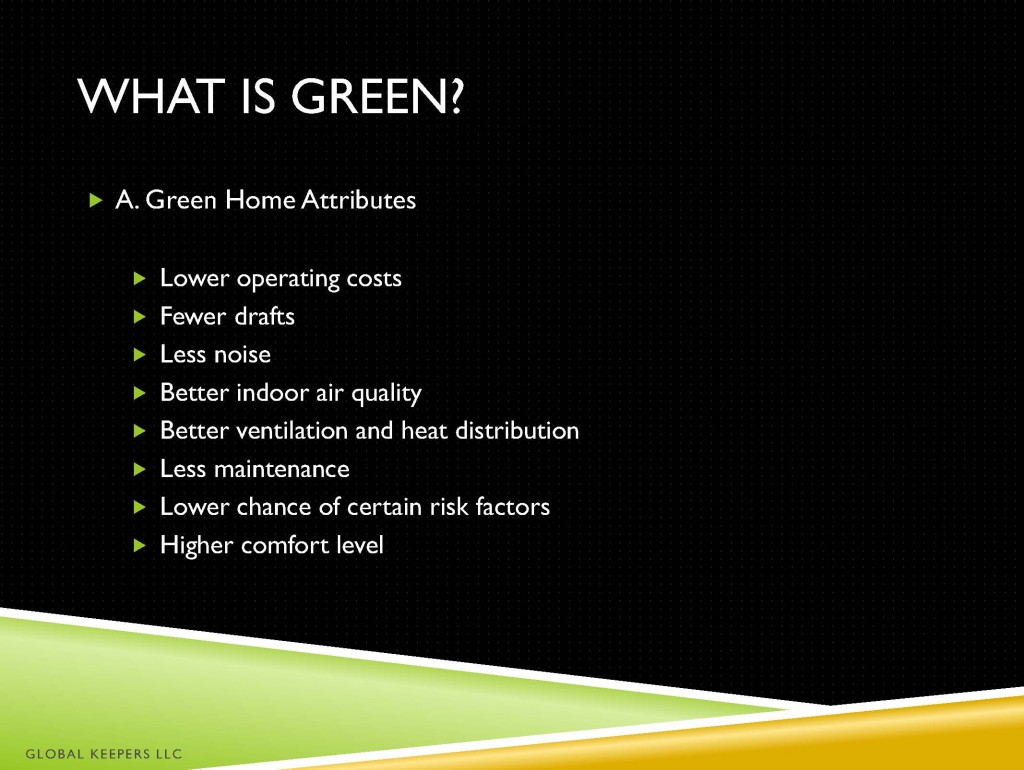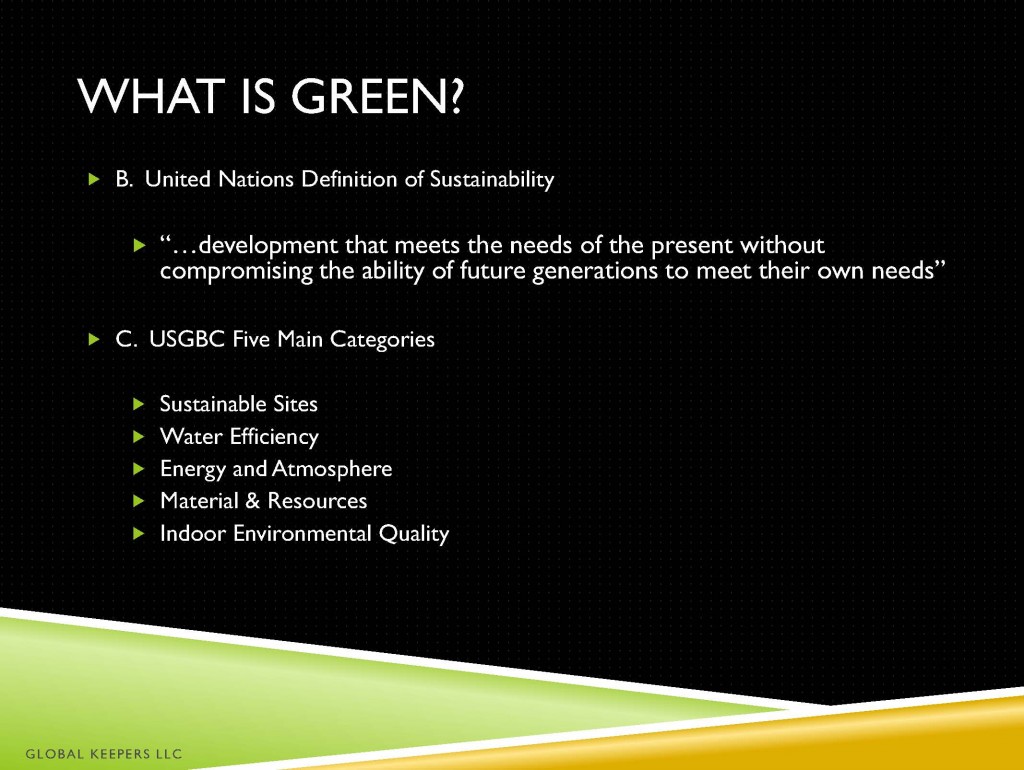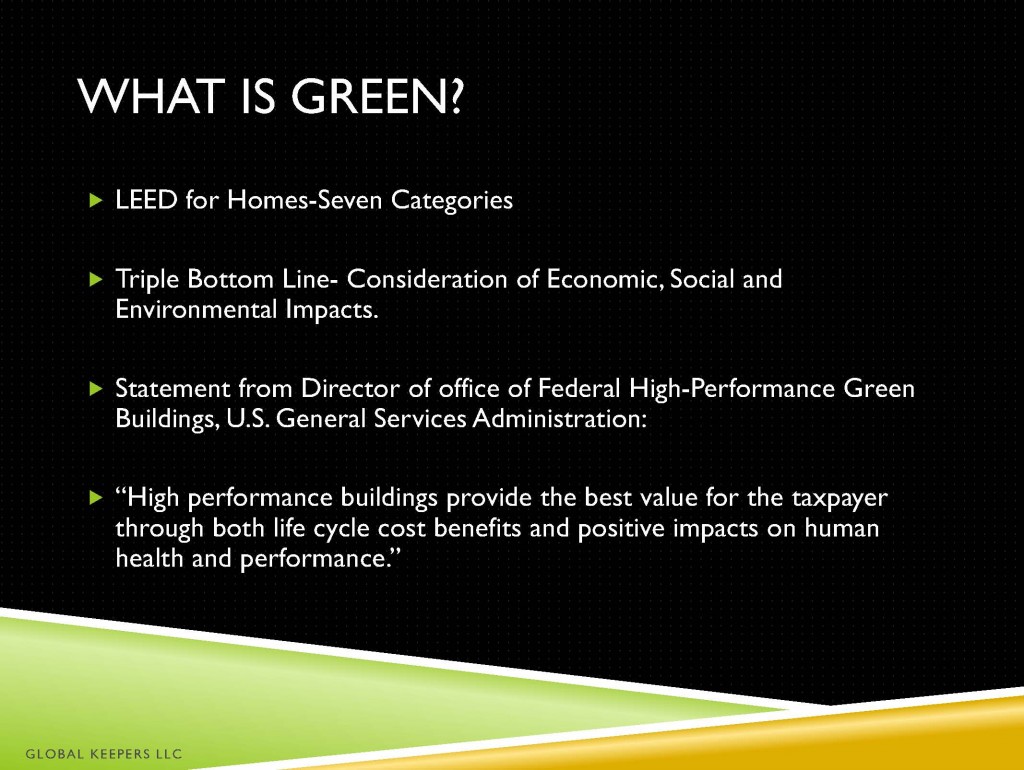What is Green?
What is Green?
The United Nations defines sustainability as:
“…a development that meets the needs of the present without compromising the ability of future generations to meet their own needs.”
Products which do not need to be transported are also considered “sustainable” because they do not require the negative impact of fuel consumption from transportation for their use. The term “eco-friendly” is often used to reference the indoor environment, with ecologically friendly products considered less likely to create irritations and allergens. Low VOC (Volatile Organic Compound) paints are an example of an eco-friendly improvement. Materials which are pletiful are considered a more sustainable alternative as they do not deplete resources in shorts supply. Bamboo has increased in popularity in recent years due to its plentiful supply, and quick growth.
There are certifications for green products which indicate that the process of their creation or delivery to market has been monitored by a third party. The Forest Stewardship Council (FSC) is a non-profit which monitors forestry.
LEED
The Untied States Green Building Council (USBGC) has a rating system known as the Leadership in Energy and Environmental Design (LEED) Green Building Rating System. This is a rating system nationally recognized for high performance green buildings. Projects are evaluated to see if they are
Environmentally responsible
Profitable
A healthy place to live
The LEED system considers the “triple bottom line, or the economic, societal and environmental impacts of a development.
The USGBC web site www.usgbc.org has the following information:
In the United States, buildings account for:
- 36% of total energy use/65% of electricity consumption
- 30% of greenhouse gas emissions
- 30% of raw materials use
- 30% of waste output/136 million tons annually
- 12% of potable water consumption
The LEED system is very comprehensive with construction gaining points for a variety of different ways the project is “green” depending o the distance supplies are brought form, the recycling aspect of construction materials, and how healthful the environment being created is.
LEED standards are gaining momentum and there are now a number of states which have become “LEED” states in that they are requiring LEED standards for certain types of development.
Energy Star
“Energy Star “is a term used to indicate that construction has met with the requirements of the Federal Government Energy Star Program, administered by the Department of Environmental protection. New construction which is Energy Star rated has been subject to inspection by a third party who measures the amount of heat loss by blowing a huge fan through the home and seeing where there is leakage of air through the envelope.
The Energy Star rating system is also used for light bulbs, appliances, windows and other items which meet performance guidelines for maximum efficiency.
NYSERDA and Energy Smart
The New York State Energy Research and Development Authority (NYSERDA) makes reference to “Green Building” as the “design and construction of buildings giving careful consideration to three main elements:
Maximum energy efficiency
Healthy indoor environment
Thoughtful use of natural resources
NYSERDA’s programs are substantial and include incentive programs for installation of photovoltaic solar panels, geothermal heating and other energy savings improvements.
NYSERDA requires work to be done under its programs to be done by a contractor certified by the Building Performance Institute. The Home Performance Program by NYSERDA begins with an inspection by a Building Performance Institute certified energy inspector, who makes recommendations for work which can improve energy efficiency.
Under the NYSERDA program the contractor prepares a contract and informs clients of the various incentives which can be obtained under the NYSERDA program. The paperwork is processed by the contractor, the work is reviewed by a third party representing the state, and a rebate is made after the work is completed.


